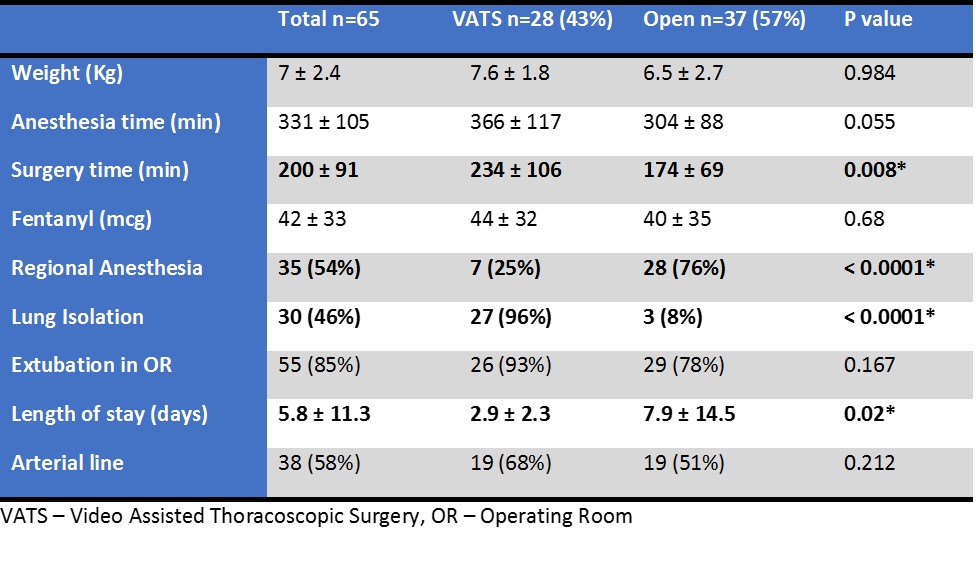NM-292
Congenital Pulmonary Airway Malformations in neonates and infants: Do we need one lung ventilation?
Narayanasamy S, Adler E, Mahmoud M, Lim F, Subramanyam R
Cincinnati Children's Hospital Medical Center, Cincinnati, Ohio, USA
Introduction:
Congenital Pulmonary Airway Malformation (CPAM) is a rare developmental abnormality of the lower respiratory tract with a reported incidence of 1:7200 to 1:27,400 (1). Literature on anesthetic management of CPAM is scarce. To our knowledge, this will be the first case series describing the anesthetic management of CPAM.
Methods:
IRB approval was obtained. Fetal center records were reviewed retrospectively from January 2010 to July 2016 for children who had been operated for CPAM. Data was also collected on demographics, techniques of anesthetic induction, maintenance, use of regional anesthesia, one lung ventilation, and postoperative intensive care. The variables were compared between the VATS (Video Assisted Thoracoscopic Surgery) group and open thoracotomy group. Data were analyzed using Fischer’s exact test or Student t test as appropriate. A p value of < 0.05 was considered significant.
Results:
A total of 74 patients underwent CPAM repair between January 2010 and July 2016. There were 65 resections in the final analysis (others were excluded). The demographics between the VATS and open group were comparable.
The surgical time was significantly longer in the VATS group (Table 1). One lung ventilation was required in all VATS procedure (except in one patient where the mass removed thoracoscopically with two lung ventilation). Regional anesthesia was more commonly used in the open thoracotomy group. There was no significant difference between the groups in the amount of intraoperative narcotic use, invasive monitoring of blood pressure or extubation in the operating room.
Conclusion:
Patients undergoing VATS repair are more likely to require one lung ventilation as compared to open repairs. CPAM patients having VATS repair are less likely to have epidural catheter placement for postoperative pain control and have shorter length of hospital stay compared to open thoracotomy repair.
References:
1. Lau CT, et al. Is congenital pulmonary airway malformation really a rare disease? Result of a prospective registry with universal antenatal screening program. Pediatr Surg Int. 2017 Jan;33(1):105–8.
2. Mattioli, et al. Congenital Lung Malformations: Shifting from Open to Thoracoscopic Surgery. Pediatrics & Neonatology. 57(6):463–6.
Top












